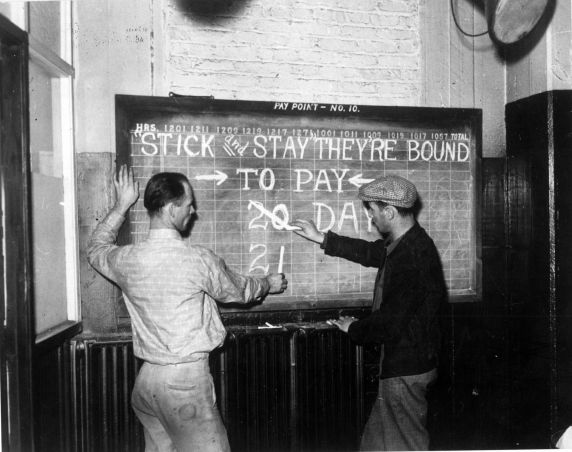Subject Focus: Remembering the Flint Sit-Down
Tired of reductions in pay and jobs, increased workloads, and harassment of United Automobile Workers organizers, on December 30, 1936 automotive workers in the General Motors Fisher Number One Plant in Flint, Michigan sat down on the job. For the next 44 days workers refused to work or leave the Fisher One and Two plants, and later Chevrolet Number 4. Michigan Governor Frank Murphy refused to order the strikers out, so GM attempted to expel them by shutting off the plants’ heat and electricity and by preventing food deliveries. After violent clashes between strikers, the police, and “goons” hired by GM, Murphy called in the U.S. National Guard to keep the peace outside the plant. Strikers’ female relatives started the Women’s Emergency Brigade to organize protests and to bring food and supplies to the strikers. Children walked the picket line outside. With its automobile production almost crippled, on February 11, 1937 GM reached a temporary agreement with the UAW and ended the most famous labor strike in American history.
As the 74th anniversary approaches, learn more about the Flint Sit-Down by looking through the numerous related collections housed at the Reuther Library. Among them are the collections of UAW Vice President Wyndham Mortimer; particpants Henry Kraus, Francis O’Rourke, and Robert Dunn; and Genora Dollinger, who organized the Women’s Emergency Brigade. The Reuther also has oral history interviews with numerous participants, including Dollenger, Dorothy Kraus, Joseph Ditzel, Carl Haessler, Roy Reuther, and Larry Davidow. Images of the strike can be found on the Flint Sit-Down Strike Image Gallery and by searching the Virtual Motor City Project.

Troy Eller is the Archivist for the Society of Women Engineers.
- teller's blog
- Login to post comments
- Printer-friendly version

 Reddit
Reddit Facebook
Facebook LinkedIn
LinkedIn